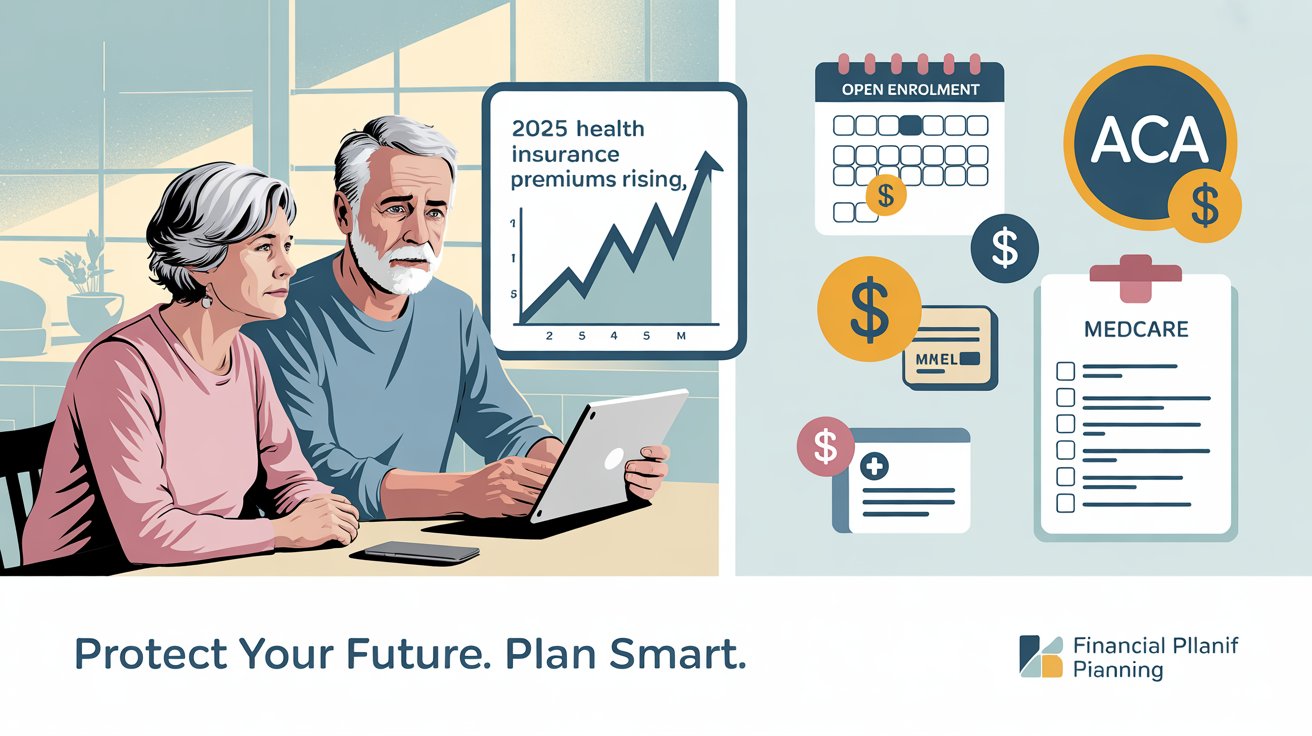
Why You’re Facing Rising Health Costs
If you’re planning to retire early in 2025, expect health insurance premiums to hit your wallet harder than you might think. Here’s what’s pushing premiums upward:
- Medicare Part B & D Premium Increases
- Medicare Part B premiums rose to $185/month in 2025 and are projected even higher in 2026—10–12% increases for Part B and deductible hikes for Part D KiplingerInvestopedia.
- Income-Related Monthly Adjustment Amounts (IRMAA) for high earners also rose, with surcharges ranging up to $85.80/month for Part D KiplingerInvestopedia.
- Affordable Care Act (ACA) Marketplace Premium Surge
- ACA premiums are seeing the steepest jump since 2018, with insurers requesting average rate hikes of 18% for 2026; in some states, up to 75% hikes are on the table InvestopediaAxios.
- The expiration of pandemic-era subsidies at end-2025 will worsen affordability, especially for early retirees reliant on ACA policies KFF Health NewsAxios.
- Aging Factor & Baseline ACA Costs Climbing
- On average, a 40-year-old ACA silver-plan enrollee pays ~$539/month ($6,468/year); premiums rise around 7% YoY, often hitting older early retirees harder due to aging multipliers MoneyGeek.comKiplinger.
What Early Retirees Should Do Now
1. Forecast & Budget Ahead
- Use age multipliers—e.g. a 62-year-old on ACA could pay ~2.87× a baseline $373 premium, or ~$1,070/month SmartAsset.
- Track upcoming ACA and Medicare premium adjustments to fine-tune your post-retirement income projection.
2. Maximize Subsidies & Tax Planning
- Ensure you qualify for subsidies under the ACA; early retirees near the poverty level may still benefit.
- Plan withdrawals and income to stay below IRMAA thresholds—consider Roth conversions or delaying RMDs to manage MAGI Kiplinger.
3. Evaluate Coverage Options
- ACA vs. Medicare: Retiring before age 65 means ACA coverage; after and enrolled, Medicare becomes your primary option.
- Watch the open enrollment windows—for ACA (Nov–Dec) and Medicare (Oct 15–Dec 7) InvestopediaKiplinger.
- Explore Medigap or Medicare Advantage if eligible; early research helps avoid surprises.
4. Appeal IRMAA If Income Drops
- Qualify due to retirement or other life changes? File SSA-44 to appeal if your MAGI falls and surcharges are being incorrectly applied Kiplinger.
5. Layer Coverages & Cost-Sharing
- Consider short-term or catastrophic plans to bridge insurance gaps temporarily—though deductibles and coverage breadth vary.
- For those near retirement, continuing employer coverage under COBRA may be wiser than paying full individual-market premiums.
Putting Your Strategy into Action
| Step | Key Action |
|---|---|
| 1️⃣ | Calculate projected premiums: Use age-based ACA and Medicare estimates. |
| 2️⃣ | Simulate income scenarios: Model IRMAA triggers. |
| 3️⃣ | Track open enrollment: Mark your calendar and compare 2026+ pricing. |
| 4️⃣ | Organize documentation: W-2s, MAGI details for IRMAA appeals. |
| 5️⃣ | Consult a benefits advisor: Navigate ACA vs. Medicare vs. Medigap. |
Conclusion
Retiring early isn’t just about having enough savings—it’s also about healthcare readiness. With premium costs rising, smart planning for ACA and Medicare transitions is essential. Your goal? A retirement plan that’s both financially and medically secure.
retireearly #healthinsurance #premiumincrease2025 #ACA #Medicare #IRMAA #earlyretirement #budgeting #subsidies #openenrollment